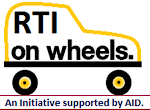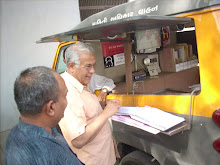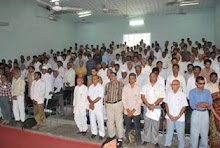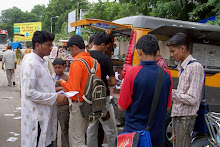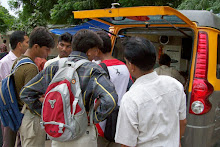The Hans India: Bangalore: Tuesday,
July 12, 2016.
On balance
however I am satisfied that there is little cause for despair. Just as the
phenomenon of water boiling and becoming steam, the transition from one state
of order to a state of higher order is invariably marked by an intervening
period of chaos.
This, I
believe, is what happened in India, - once, soon after it broke off from the
shackles of the tyranny and exploitation
of colonial rule, and - again, after the structural adjustment its economy went
through post liberalization, privatization and globalization.
Pre-independence
India saw many social evils and economic inequalities writ large especially on
the rural scene. Untouchability, child marriage, the zamindari system, the
despotic regime in some princely states and the absence of a voice for the
common man in the affairs of the nation were only some of these.
Freedom
obviously was a good thing to have happened. Its sudden onset, and the complete
and violent change it brought about in its wake is where trouble lurked. The
situation was not unlike a fasting person breaking his fast not with a gentle
glass of lemon juice but with a seven course spread. One wonders whether, at
that time, we as a country did not bite off more than could be chewed or
started chomping on much more than what we could hope to swallow and digest.
Universal
franchise and votes for women, sans a Suffragette movement (as in UK) or a
struggle (as in USA), laws making untouchability, child marriage, zamindari and
princely states things of the past perhaps too many good things happened too
soon. Even contradictory phenomena such as the growth of trade unions on the
one hand and development of private industry on the other were witnessed.
Once the dust
settled down an a semblance of order began to appear but it was another four
decades before the second watershed, namely structural adjustment, kicked in.
As I
personally see it, the Mahalabonis model of economic growth and overall
development, together with the Nehruvian dream of “growth with justice,” faded
away and yielded place to a new paradigm of “growth and justice”.
Thereafter we
have, on the whole, acquitted ourselves reasonably well and today India’s face,
at seventy, looks quite unwrinkled though the smile is somewhat tentative and
uncertain.
To cut a long
story short, we have to our credit a number glorious achievements and
spectacular accomplishments. We have done very very well in many important
spheres.
There is,
however, a long way to go before we can rest on our oars. Hunger, poverty,
disease, squalor and fear remain as scourges that continue to haunt millions of
our people in many parts of the country. Availability and access to drinking
water, nutritious food, health, education and a life with dignity, remain but
as elusive and distant dreams for a large section of our population.
There is thus
a mammoth nation building task ahead of us, a task full of travails and
challenges.
Sagacity and wisdom are the important
attributes that the leaders and administrators of the country today need to
possess, if their actions are to prove equal to the hopes and aspirations of
the people who put them where they are today.
The crying
need of the hour is to agree upon a short, simple and clear agenda that the
country’s leadership will address, if necessary to the exclusion of all else,
at least for a short period. Food security, access to basic minimum needs
including drinking water, housing, education, health, disaster preparedness
etc. need to figure therein.
An all out
war on persisting maladies such as infant mortality, the lack of physical and
economic security for women, the aged and the challenged, and public health
etc. are all priorities that can no longer await their turn for catching the
attention of those in charge of governance.
The common
citizen is entitled to be promised a time bound solution to these vexing
problems.
It is precisely in this exercise that an
exciting role awaits the civil servants of the the future. Thanks to the heroes
of the past, including legendry figures such as S.R. Sankaran, T.N. Seshan,
P.S. Appu etc. the description, by Sardar Patel, of the civil service in the
country as the “steel frame” continues to be relevant.
And it is a
lucrative and attractive career too. The pay is good, there is social status
attached to the positions one will hold and, above all, is the high value of
the factor of convertibility of good ideas into effective action and concrete
results, especially at the grassroots levels.
Before I
conclude I cannot help making one more reference to the extraordinary position
granted to the civil servants by the Constitution of India to enable them to
hold their heads high and perform their duties without fear or favour.
There is
absolutely no need for the civil servants to bend, much less crawl. They only
have to ensure that their actions are not arbitrary, discriminatory or mala
fide. Accountability and transparency are now accepted as the essential futures
of good governance.
And it is
heartening to note that many initiatives have been taken in recent times to
infuse these characteristic into the functioning of all manner of institutions
and at all levels. The Right to Information (RTI) Act is a notable development
in this context.
Above all, as
the late M.R. Pai (a civil servant of yesteryear from the then Andhra Pradesh
cadre) put it, civil servants need always to remember that they are public
servants, not government officials.
Instruments
of government, not tools in the hands of politicians. It is the citizens of
India whom they exist to serve. It is their satisfaction they need to strive
for and that their ire they should guard against. No one else matters.




